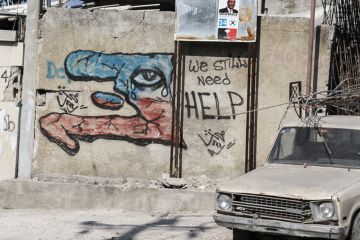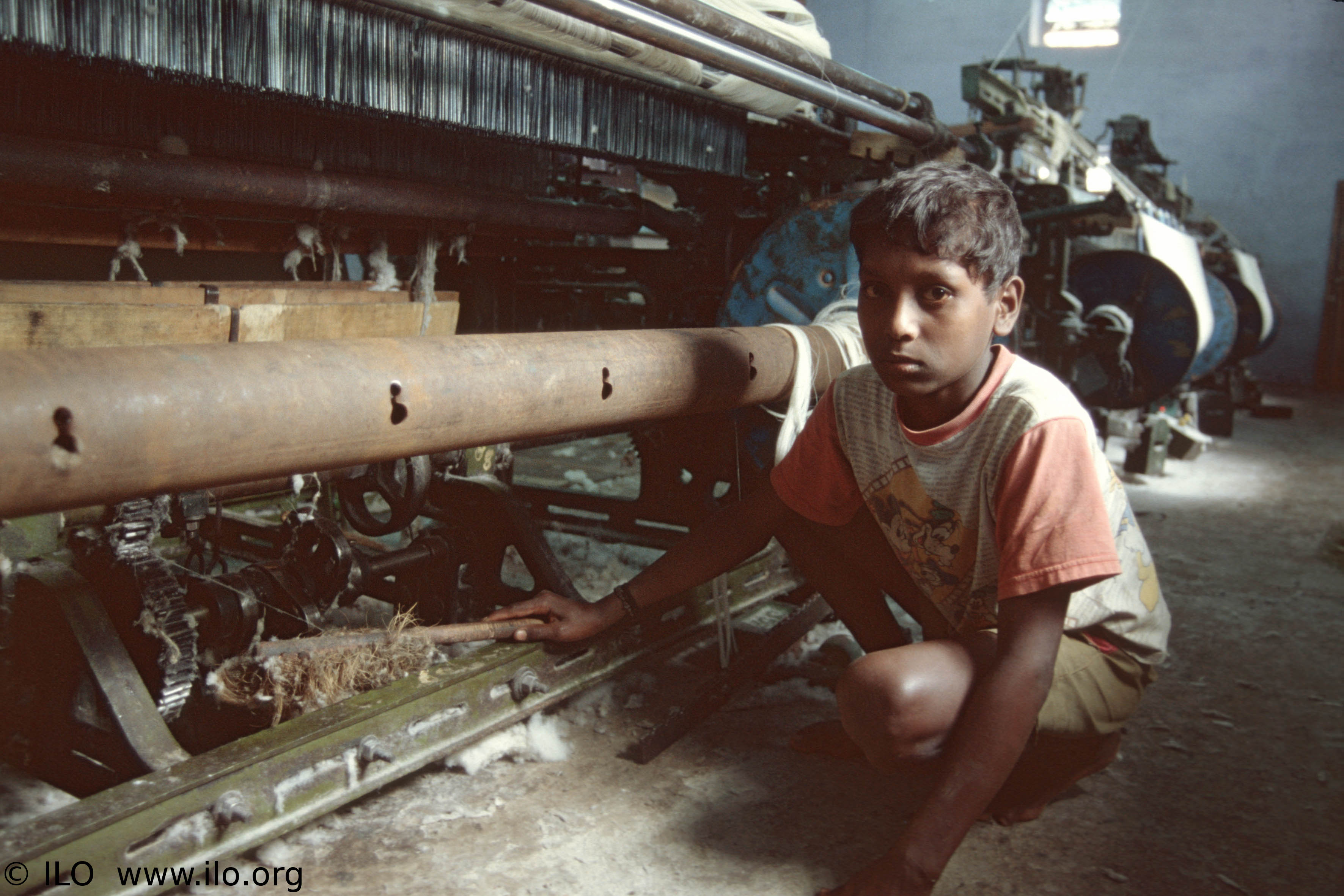Qatar’s World Cup: Human Trafficking and the Kafala System
By: Simone van Slooten, 24 November 2016
While human trafficking is a major global issue, distinct variations can be observed, which differentiate one region’s activity from another. For example, in the Pacific and East and South Asia, two thirds of the identified victims of human trafficking are smuggled for labour exploitation. Meanwhile, in Europe and Central Asia, trafficking for sexual exploitation accounts for two thirds of the identified victims (GLOTIP, 2014, 34). In the Middle East, a common pattern that has been discerned involves the trafficking of people from Southern and South-eastern Asia to the Gulf States for the purpose of labour exploitation. The people often migrate voluntarily and legally to work as low-skilled labourers or domestic servants, but can find themselves in positions of exploitation (Aronowitz, 2013, 97). Global statistics on human trafficking can vary vastly when analysed per region and it is crucial that global averages do not dominate the discourse on human trafficking and its patterns.
The trafficking of human beings is caused by structural and proximate factors (Cameron & Newman, 2008, 21). Structural factors include poverty, globalization and negative attitudes towards gender, for example. On the other hand, poor law enforcement, corruption and weak awareness campaigns can be categorised as proximate factors. Naturally, structural factors are more difficult to eliminate than proximate ones, but it is nonetheless imperative that countries address them in their policies in order to diminish the trafficking of human beings (Cameron & Newman, 2008, 21).
Multiple push and pull factors contribute to the trafficking of human beings from countries in South Asia to Qatar. Many people in South Asia are affected by structural causes of poverty, such as unemployment and a low level of education. Cameron and Newman argue that poverty facilitates a situation in which people have few alternatives, which may increase their vulnerability to coercion and deception prior to being trafficked and powerlessness once they are in an exploitative situation (Cameron & Newman, 2008, 22). Migrants have few opportunities in their home countries and are willing to leave their families to find a job, which gives them a high salary in comparison to their minimal earnings at home.
For Qataris, on the other hand, money is not an issue. The country has the highest income per capita in the world. However, with only 200,000 citizens, it has a shortage of labourers. There is an active demand for migrant workers, which is managed through recruitment agencies. Consequently, the country imports hundreds of thousands of migrants from the poorest of places on earth. There is a strong migrant presence, which can be an attractive pull factor for other migrants to follow suit. Qatar and its labour shortage provide the opportunities that poor people in South Asia are desperately searching for: jobs. The positions for low-skilled labourers in construction will allow them to earn a higher salary than they would earn in their home countries, which enables them to send money to their families and to provide them with a better life.
The Kafala system, a sponsorship scheme, plays a large role in a migrant’s exploitation and his inability to leave the situation. This system is found in countries across the Gulf, such as Saudi Arabia, Bahrain and the United Arab Emirates and has taken precedence over existing labour regulations (The Economist, 10 August 2013). The process begins in the home country of employment seekers. For instance, young, healthy men in Nepal are recruited by agencies to work in Qatar, and they often have to take out a loan to pay for the services of the agency and for its investments in the migrant. The system of Kafala, subsequently, involves companies that effectively sponsor a migrant to come provide labour for them in Qatar. Through the use of a contract, Kafala legally binds the migrant to his employer for a certain amount of time, typically for several years. During this period, the employer legally owns the migrant worker and assumes an authoritative position. Oftentimes, upon the migrant’s arrival, the contract is torn up, travel documents are withheld and the migrant is forced to work and live in very dangerous conditions, without any guarantees of health and safety.
Furthermore, Kafala impedes the migrant’s ability to leave the exploitative situation and return home. The migrant is unable to leave Qatar without an official exit visa, which can only be acquired with the approval and help of the employer. Consequently, the employer is in a position of overwhelming power and can easily block a migrant’s only way of leaving Qatar or force him to work even harder and in more dangerous circumstances. The migrant worker has no money, no other job opportunities and has probably incurred a large debt during the process of migrating to Qatar, all of which contributes to and increases the migrant’s dependency on his employer. Even if the labour conditions are very poor, the migrant worker is discouraged from leaving because of this grave power imbalance. Lastly, the Kafala system does not provide for common labour rights, such as collective bargaining and assembling in a worker’s union, which makes it practically impossible to address the human rights violations of the migrant workers in Qatar in a collective manner.
In order to put a stop to the misery of foreign workers that are being exploited in Qatar, there are a number of approaches that can be taken, which vary from international to local ones and structural to proximate ones. On a larger, international and structural level, the crushing poverty that leads these foreign workers to endure their exploitation in Qatar needs to be addressed. The economic and social inequalities in source countries that fuel the need to migrate in order to find a job and provide for a family are the fundamental conditions under which trafficking and exploitation flourish. If these inequalities are met, the incentive of workers to migrate to Qatar will also decline. On a local and proximate level, Qatar needs to include indisputable rights for migrant workers and ensure that companies comply with them. This necessitates the cooperation and non-corruption of the local law enforcement officers. The General Secretary of the International Trade Union Confederation explains that merely encouraging companies to improve working conditions will not have an effect without the enforcement of the companies’ compliance. FIFA is in a powerful position to make an important contribution to ending the misery of foreign workers in Qatar. The organisation could use its position to openly advocate for the rights of foreign workers. Furthermore, they could put the rights of foreign workers and an end to the Kafala system on the table as incontestable demands if Qatar truly wants to organise the World Cup.
There have been more recent developments on the Kafala system, most notably in a legal sense. Nearly one month ago, the Dutch labour union FNV brought a claim on behalf of a Bangladeshi worker to Swiss courts, suing FIFA for “alleged complicity in the mistreatment of migrant workers” (The Guardian, 10 October 2016). In a letter addressed to FIFA president Gianni Infantino, the FNV lawyers emphasise that the organisation must abide by Swiss and Qatari law, as well as fundamental international human rights law. The FNV has given FIFA an ultimatum of three weeks to acknowledge its complicity and pay damages to Nadim Sharaful Alam, after which it will bring its claim to Swiss courts.
As criticism is intensifying, Qatar seems to be caving under the pressure of the international community. A new law amending the Kafala system is set to come into effect this December, after the Emir approved it in October 2015. The key reform affects the migrant’s right to leave the country. Instead of applying to the employer for an exit visa, which is the current situation, the migrant will apply to the Qatari government (Doha News, 22 May 2016). Though employers have the right to object to the migrant’s departure from the country, the migrant still has the right to appeal a refusal of an exit visa. Additionally, the government, instead of the employer, must give its consent to a migrant worker that wants to take up another job after his fixed contract is finished.
While Qatari officials hail the plan as a significant step forward in the amelioration of foreign workers’ rights, critics assert that the freedom to leave Qatar is often not a viable option, especially when workers find themselves subject to abusive relationships. As the World Cup approaches, so do the deadlines on stadiums and infrastructures. It is highly debatable whether the Qatari monarchy is committed to improving the rights of migrants, and it remains to be seen whether the new legal reforms will aid those working in Qatar currently. An underlying factor that needs to be addressed as well is the crushing poverty that drives migrants to abusive situations where they can be exploited for their labour. Unless the structural causes are tackled, people will find a supply of jobs where they are demanded, even if it could cost them their lives.




